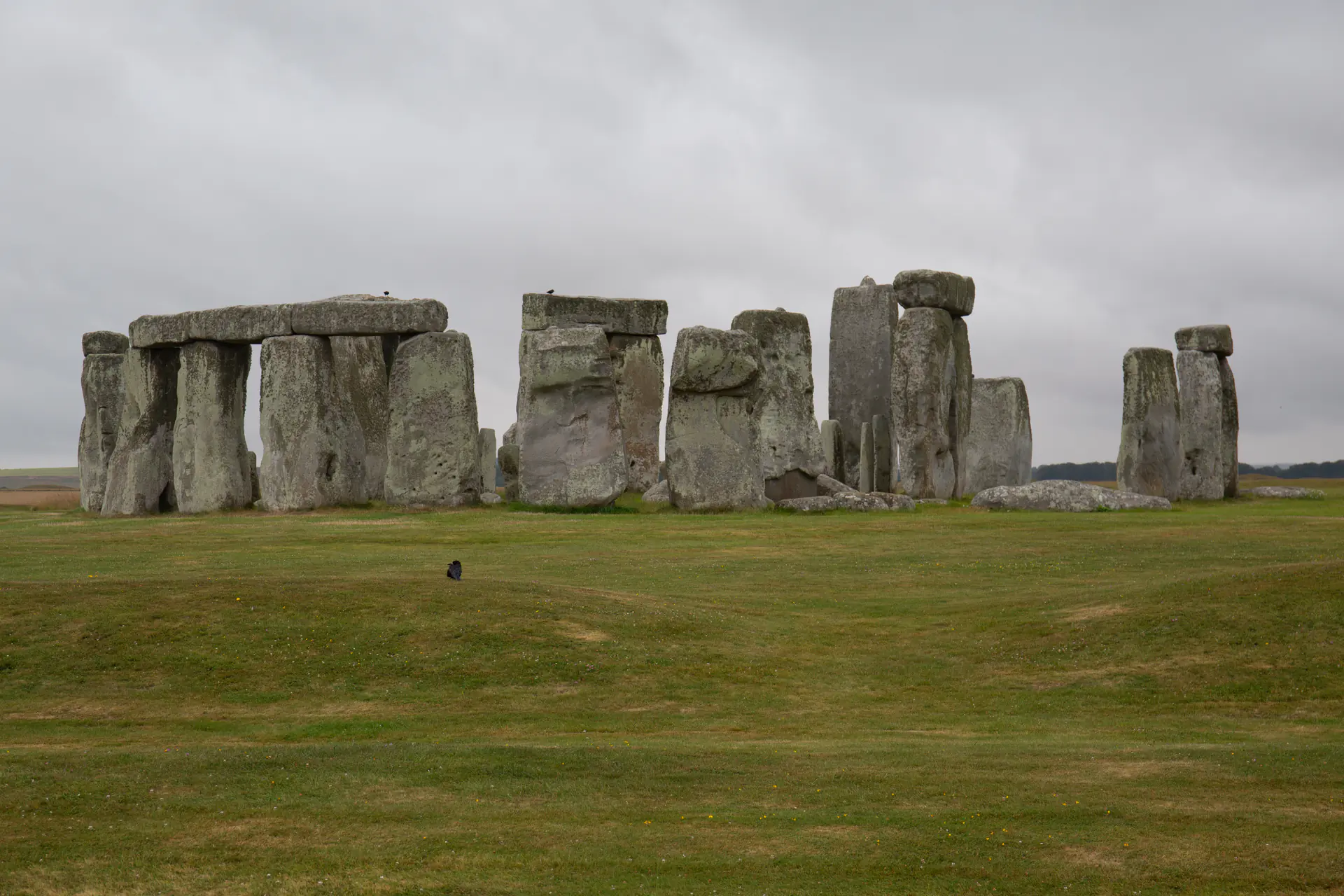
Stonehenge's Megalithic Stone Circle on England's Salisbury Plain
Ancient Astronomical Observatory and Sacred Neolithic Monument
About This Site
Stonehenge and Avebury form the heart of Britain's most concentrated prehistoric landscape, representing humanity's most extraordinary megalithic achievements. Stonehenge showcases sophisticated Bronze Age engineering and astronomical knowledge through its iconic trilithons and precise solar alignments, whilst Avebury encompasses the world's largest stone circle within a remarkable Neolithic ceremonial complex. Together with ancient burial mounds, processional avenues, and sacred earthworks, this UNESCO Cultural Heritage site demonstrates remarkable stone construction techniques and reveals ancient understanding of celestial movements spanning over 4,500 years of continuous cultural significance across multiple interconnected monuments. The transport of 50-tonne sarsen stones and Welsh bluestones covering 240 kilometres represents remarkable prehistoric engineering capabilities and sophisticated social organisation.
Why It Matters
This exceptional UNESCO Cultural Heritage site showcases both the architectural mastery of prehistoric Britain and the sophisticated astronomical knowledge of Bronze Age civilisations, demonstrating humanity's earliest monumental achievements in stone construction and celestial observation. The transport of massive stones over 240 kilometres and precise solstice alignments reveal advanced engineering and astronomical understanding.
Wonders of the Ancient Observatory
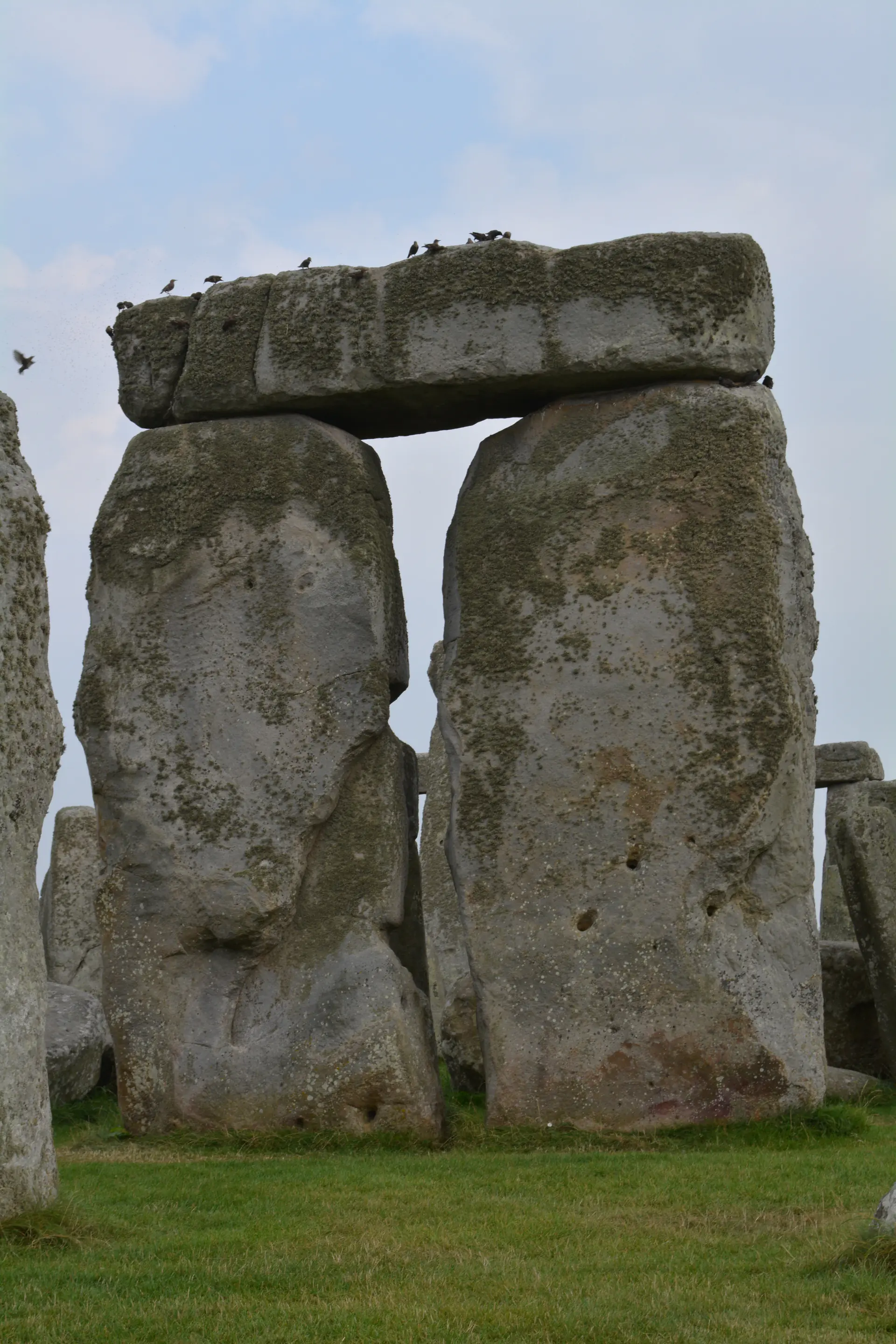
The Great Trilithons
The most impressive features of Stonehenge are the massive trilithons—two upright sarsen stones supporting a horizontal lintel stone, some weighing up to 50 tonnes each. These architectural marvels demonstrate sophisticated Bronze Age engineering, with precisely carved mortise and tenon joints securing the massive stones together using techniques unprecedented for the period. The largest trilithon originally stood over 7 metres tall, forming a horseshoe arrangement that frames the monument's sacred interior space. Archaeological evidence suggests these monumental structures required coordinated efforts of hundreds of people and advanced understanding of leverage, construction techniques, and complex social organisation.
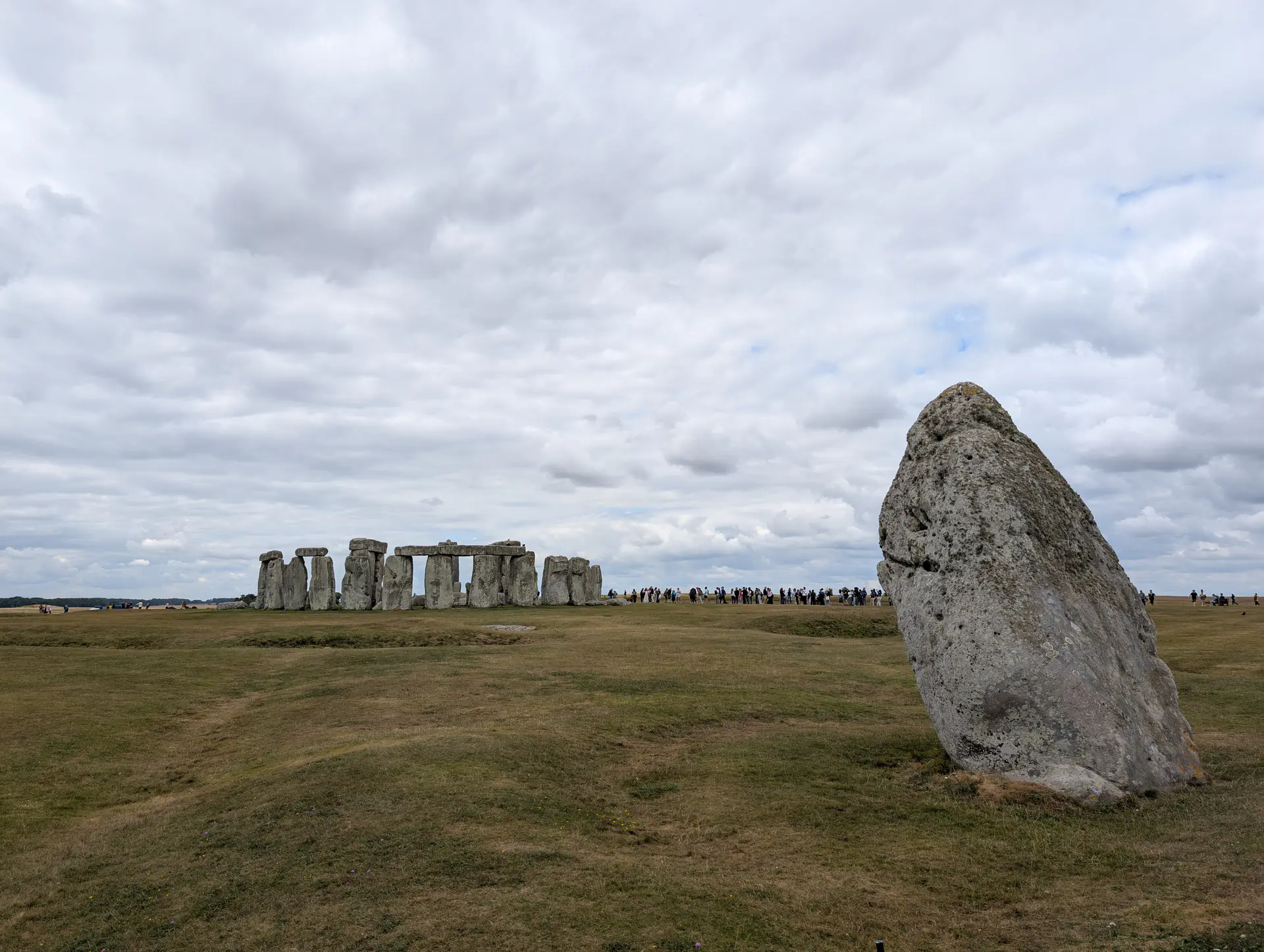
Heel Stone and Solstice Alignment
The Heel Stone stands as a remarkable testament to prehistoric astronomical knowledge, positioned precisely to mark the summer solstice sunrise when viewed from the stone circle centre. This 4.7-metre-tall sarsen stone, weighing approximately 35 tonnes, demonstrates that Stonehenge's builders possessed sophisticated understanding of celestial movements and calendar systems. During the summer solstice, crowds gather to witness the sun rising directly over the Heel Stone, continuing a tradition spanning over 4,500 years. Recent research suggests the monument may have served as an ancient observatory, with multiple alignments tracking lunar and solar cycles.
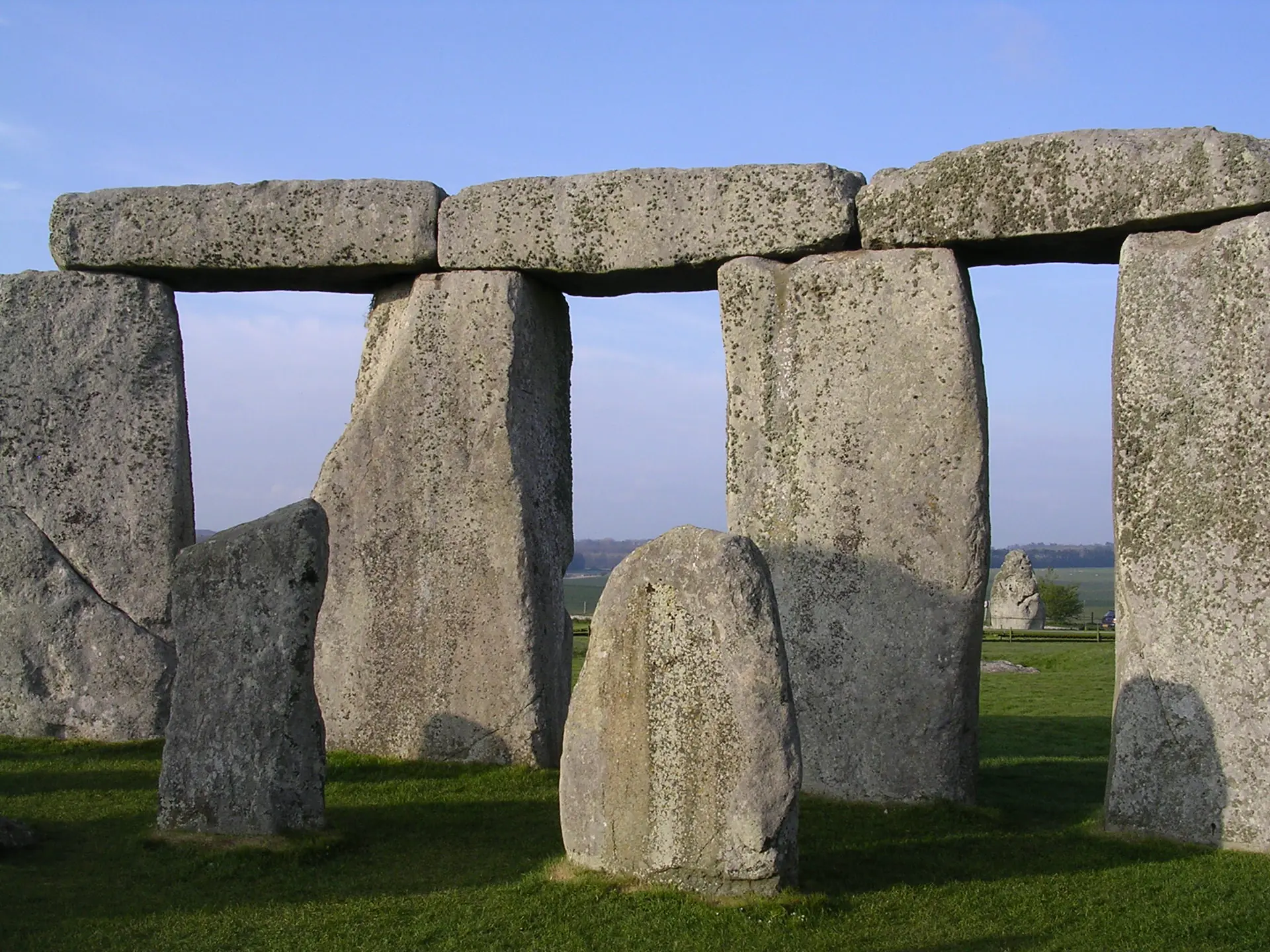
Interior Stone Circle Experience
The inner sanctum of Stonehenge reveals intimate details invisible from the outer viewing areas, including weathering patterns, prehistoric tool marks, and the precise positioning of bluestones transported from Wales 240 kilometres away. Visitors with special access can appreciate the monument's complex construction phases, spanning over 1,500 years from 3100 BC to 1600 BC. The interior perspective shows how acoustic properties may have amplified ceremonial activities, with stones arranged to create specific sound effects and enhance ritual experiences. Archaeological evidence suggests this sacred space hosted cremation burials, seasonal gatherings, and astronomical observations.
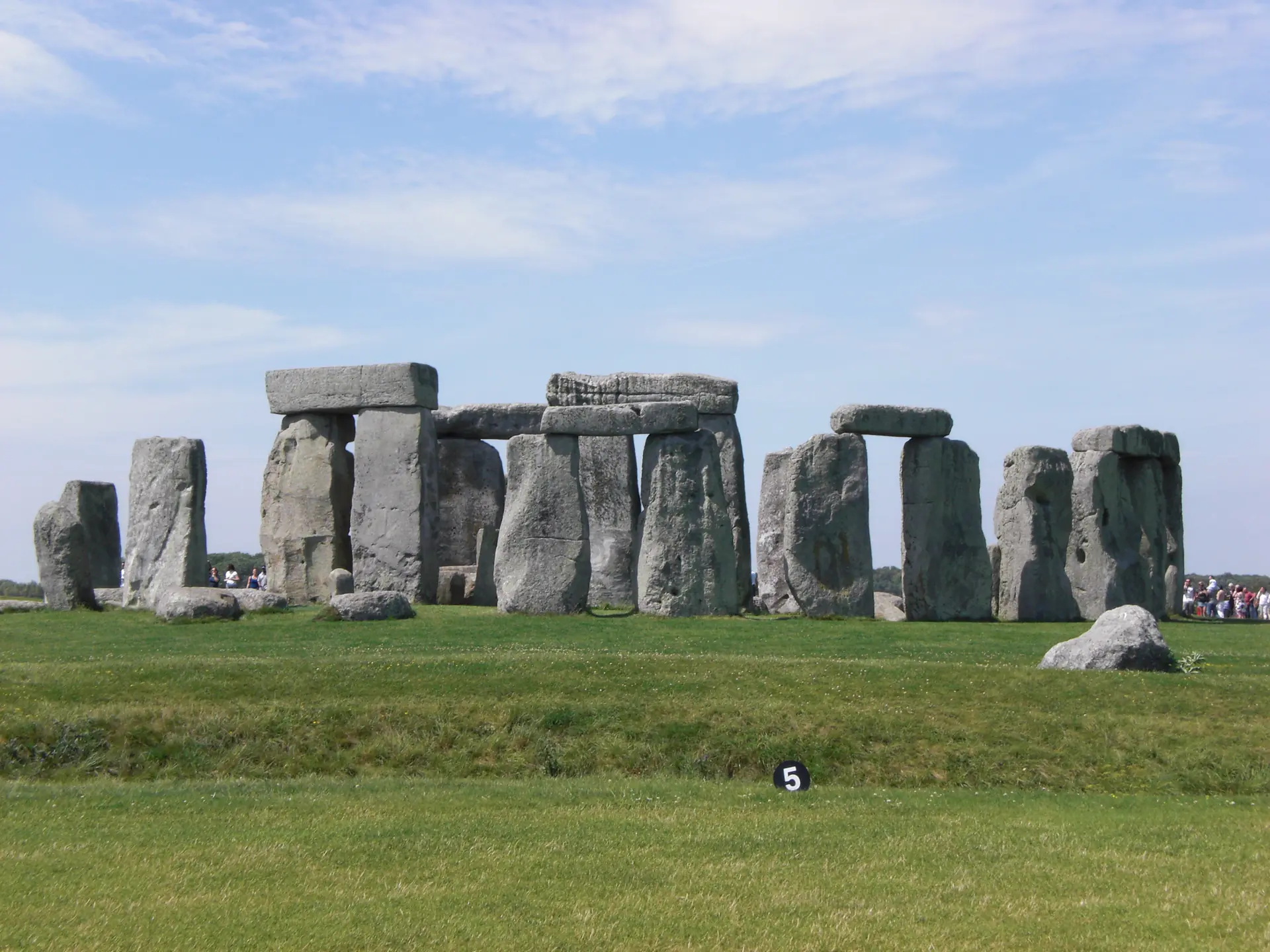
Neolithic Landscape and Avebury
Beyond Stonehenge itself lies a remarkable prehistoric landscape encompassing Avebury, the world's largest stone circle, along with ancient burial mounds, processional avenues, and ceremonial earthworks. Avebury's massive stone circle, dating to around 2600 BC, surrounds an entire village and demonstrates the sophisticated social organisation of Neolithic communities. The West Kennet Long Barrow, Silbury Hill, and ancient trackways connect these sites into Britain's most concentrated prehistoric landscape. Archaeological evidence reveals this area remained sacred for over 2,000 years, with successive generations adding monuments and maintaining astronomical alignments. The complex demonstrates unprecedented coordination amongst prehistoric communities.
Location & Planning
Access from London via train to Salisbury (90 minutes), then Stonehenge Tour Bus. Book timed entry tickets through English Heritage weeks in advance. Car hire allows flexibility for Avebury and surrounding sites.
Loading map...
Frequently Asked Questions
Stonehenge is a prehistoric megalithic monument built between 3100-1600 BC in Wiltshire, England, famous for sophisticated Bronze Age engineering and astronomical alignments. Its iconic trilithon structures attract millions of visitors annually to this UNESCO Cultural Heritage site.
Neolithic and Bronze Age peoples built Stonehenge over 1,500 years from 3100-1600 BC through multiple construction phases. Archaeological evidence suggests coordinated efforts by hundreds of people transported massive stones using sophisticated techniques and advanced engineering skills.
Take the train from London Waterloo to Salisbury (90 minutes), then the Stonehenge Tour Bus or hire a car. Advanced booking through English Heritage is essential. Many tour companies offer convenient day trips including transportation, entry tickets, and expert guides.
April-October offers optimal weather and longer daylight hours, whilst summer solstice provides special access to witness sunrise alignments. Early morning visits ensure fewer crowds and better photography conditions. Winter offers atmospheric experiences but exposed Salisbury Plain weather can be challenging.
All visitors require advance tickets purchased through English Heritage, with timed entry slots protecting the monument. Special Stone Circle Access provides closer viewing outside normal hours. Summer solstice celebrations require separate advance arrangements as thousands attend annually.
Wear sturdy walking shoes for grass and gravel paths, weather-appropriate layers, and bring sun protection. Salisbury Plain experiences variable weather and strong winds due to its exposed location. Waterproof jackets advisable year-round. Comfortable footwear essential for uneven terrain.
Avebury is the world's largest stone circle, forming part of the same UNESCO World Heritage site as Stonehenge, representing a broader Neolithic sacred landscape. Built around 2600 BC, Avebury predates Stonehenge's major phases and demonstrates different megalithic approaches.
UNESCO World Heritage Criteria
Inscribed in 1986, this site meets 3 of UNESCO's 10 criteria for Outstanding Universal Value
Criterion (i): Masterpiece of human creative genius
Stonehenge represents a masterpiece of human creative genius through revolutionary megalithic construction transporting massive sarsen stones weighing up to 50 tonnes and Welsh bluestones across 240 kilometres, whilst sophisticated astronomical alignments marking solstices demonstrate advanced Bronze Age understanding of celestial movements.
Criterion (ii): Interchange of human values
The Stonehenge landscape facilitated significant interchange of human values across Neolithic and Bronze Age Britain, spreading megalithic architectural principles, astronomical knowledge, and ceremonial practices throughout Atlantic Europe whilst demonstrating cultural connections evident in stone transport from Wales to Salisbury Plain.
Criterion (iii): Testimony to cultural tradition
Stonehenge and Avebury provide exceptional testimony to Neolithic and Bronze Age cultures spanning 4,500 years of continuous ceremonial use, representing Britain's most concentrated prehistoric landscape through monumental architecture, burial traditions, and sacred earthworks that reveal sophisticated social organisation and spiritual beliefs.
Historical Context
Mesolithic Precursors (8000-4000 BC)
Hunter-gatherer communities established seasonal camps across Salisbury Plain, with large timber posts erected around 8000 BC indicating early sacred site development preceding Stonehenge construction. Archaeological evidence reveals spiritual significance attached to this landscape for millennia before stone construction began.
Neolithic Foundation (3100-2500 BC)
Initial earthwork henge constructed around 3100 BC with timber structures and cremation burials, establishing Stonehenge as sacred site during Britain's agricultural revolution and megalithic tradition emergence. The circular bank and ditch defined the monument's enduring sacred precinct.
Bluestone Transport (2600-2500 BC)
Remarkable transportation of bluestones from Preseli Hills in Wales covering 225 kilometres demonstrates sophisticated logistics, cultural exchange, and spiritual significance of specific stone materials during monument development. Each bluestone weighed several tonnes, requiring coordinated community efforts.
Sarsen Trilithon Construction (2500-2000 BC)
Massive sarsen stones arranged into iconic trilithon structures using advanced engineering techniques including mortise and tenon joints, creating the distinctive silhouette recognisable today as Stonehenge's architectural pinnacle. The largest sarsens weighed up to 50 tonnes each.
Bronze Age Modifications (2000-1600 BC)
Final major construction phase with additional stone arrangements and refinements, establishing Stonehenge as completed monument coinciding with Bronze Age technological advances and social complexity development across Britain. Astronomical alignments were refined and perfected during this period.
Conservation & Protection
Current Conservation Status
Well-preserved prehistoric monument under English Heritage management with ongoing archaeological research and visitor impact mitigation measures ensuring protection for future generations.
Conservation Challenges
- Visitor pressure causing path erosion and requiring sophisticated access management strategies
- Weather exposure affecting sandstone preservation over millennia of continuous environmental exposure
- Traffic vibration from nearby A303 road requiring continuous monitoring and mitigation
- Tourist development pressure in surrounding archaeological landscape threatening site integrity and setting
Active Conservation Efforts
- Controlled visitor access through timed entry and protective barrier systems limiting monument exposure
- Advanced conservation techniques monitoring stone stability and weathering patterns using modern technology
- A303 tunnel project reducing traffic impact on monument setting and restoring landscape integrity
- Comprehensive landscape management protecting broader Neolithic sites across entire UNESCO property including burial mounds
- Ongoing archaeological research advancing understanding of construction and use through non-invasive techniques
Image & Content Attribution
Research & Content Sources
Photography & Visual Media
Last updated: 11 October 2025